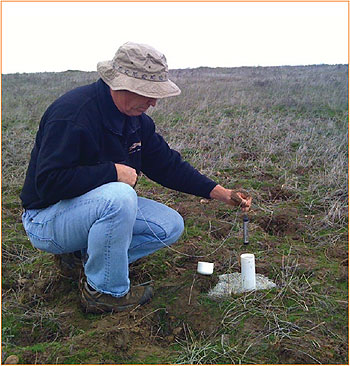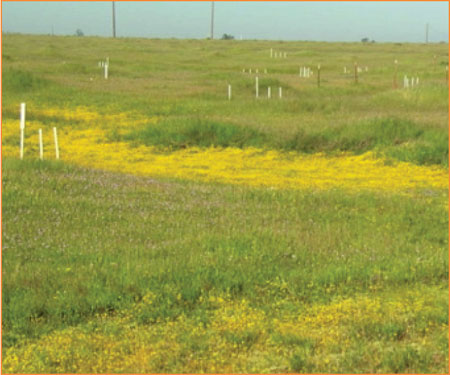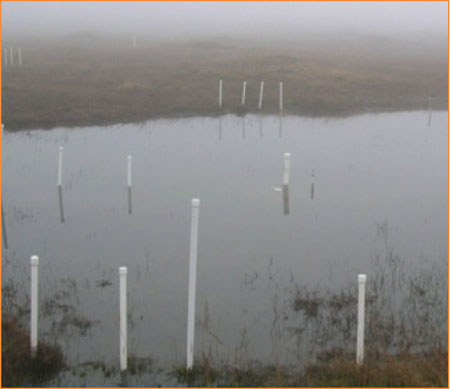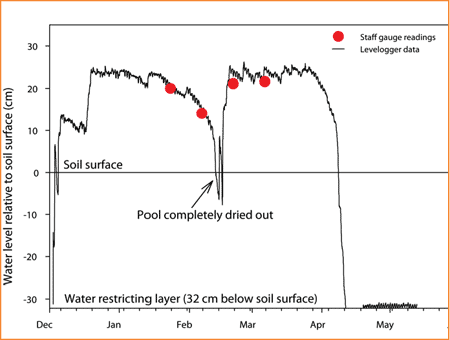
Vernal wetlands are temporary pools of water that fluctuate seasonally with complex hydrological processes. They receive inputs from precipitation, runoff, and subsurface flow, and are influenced by geology, soil, and climate. This creates a unique habitat for diverse flora, amphibians and insects, including some threatened and endangered species.
The Institute for Ecohydrology Research in Davis, California is conducting research to develop the most accurate and reliable method to measure the hydrological functioning and performance of natural and created vernal pool wetlands. They are using Solinst Leveloggers at various sites to demonstrate to the Department of Defense and other federal U.S. facilities, a cost-effective method of collecting superior hydrological data.

Vernal pool wetland during spring season with slotted PVC pipes
containing Levelogger Juniors at a research site near Sacramento, California
Currently, their on-going research includes a Department of Defense Environmental Security Technology Certification Program (ESTCP) demonstration project at Beale Air Force Base. There are 130 Leveloggers already being used. Future plans to implement Leveloggers in an environmental consultation and monitoring project are underway.
Leveloggers are also being used for research at Travis Air Force Base, where 20 Leveloggers have been installed. In addition, a project at Mather Field has over 20 Leveloggers being used to measure vernal pool hydrology, and have been for five consecutive years.
At these sites, Levelogger Junior F15/M5 Models are installed in slotted PVC pipes, and positioned on top of water restricting soil layers. They are placed in upland and vernal pool wetlands, and set to record either surface or subsurface data. The water level data is collected once at the end of each wet season. The Leveloggers are removed from the field after the pools completely dry out and, from there taken to their office to download data.
Leveloggers allow the automatic collection of hourly water level data, compared to traditional staff gauge or water level meter measurements that are manually collected on a less frequent basis. The main benefit of using Leveloggers for monitoring vernal pools is the ability to continuously record water during the entire wet season. This is not possible with the traditional monitoring methods.

Vernal Pool wetland in wet season with slotted PVC pipes containing
Levelogger Junior at research site near Sacramento, California.
Niall McCarten, Executive Director of the Institute, is pleased with the results of the research so far: “We have found the Solinst Leveloggers to be very user friendly, cost-effective, and reliable. This technology provides a much higher scientific data standard than existing methods for monitoring wetlands.” From the continuous datasets, they are able to see if the vernal pools experience any mid-season dry-outs, which can be detrimental for invertebrate species living in the pools.
Overall, the information they gain can be used to better understand the differences between natural and created wetlands, and lead to more efficient design and implementation of pools created for compensatory mitigation purposes.

Hourly Levelogger data compared to
less frequent manual staff guage readings
Solinst thanks Niall McCarten Ph.D., Executive Director of the Institute for Ecohydrology Research, for providing the details of these projects.
